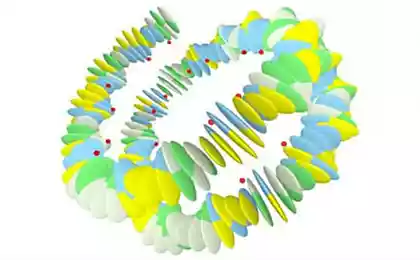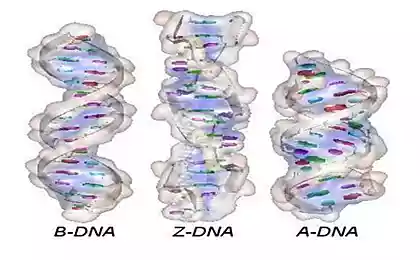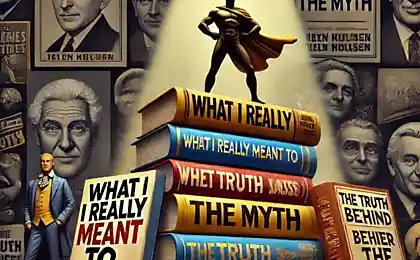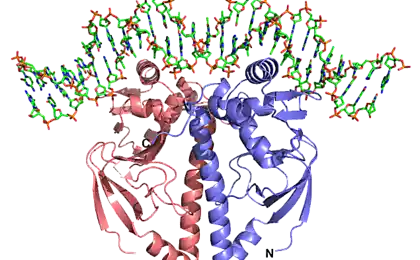680
Here's how actually looks DNA
The first comprehensive 3D-model of DNK
Stunning 3D-map shows nearly 1, 8 meters of DNA can fit in a single chromosome - the space occupied by a few hundredths of a millimeter. Chromosomes - packages of genetic material in our cells - were discovered in the late 1800s, but scientists have tried to understand how they can be placed three-dimensional DNA molecule.
A new study conducted by scientists from the Massachusetts Institute of Technology and the School of Medicine of the University of Massachusetts, led to the creation of the first comprehensive 3D-model of DNA: it shows that the DNA within chromosomes is in a tight squeeze cyclical condition. In this condensed state, which can be seen only when the cells divide, each daughter cell receives a complete set of genetic material.
When the cells begin to divide, chromosomes completely reorganized. In contrast, proteins that fold into well-defined structures, the chromosomes form a completely different object each time. Thus, the individual genome macroscopic zones may vary to fit different cells.
Long strands of DNA, sometimes reaching over two meters in length, "twisted" around proteins called histones, which results in the structure of the "beads on a string».
via factroom.ru

Stunning 3D-map shows nearly 1, 8 meters of DNA can fit in a single chromosome - the space occupied by a few hundredths of a millimeter. Chromosomes - packages of genetic material in our cells - were discovered in the late 1800s, but scientists have tried to understand how they can be placed three-dimensional DNA molecule.
A new study conducted by scientists from the Massachusetts Institute of Technology and the School of Medicine of the University of Massachusetts, led to the creation of the first comprehensive 3D-model of DNA: it shows that the DNA within chromosomes is in a tight squeeze cyclical condition. In this condensed state, which can be seen only when the cells divide, each daughter cell receives a complete set of genetic material.
When the cells begin to divide, chromosomes completely reorganized. In contrast, proteins that fold into well-defined structures, the chromosomes form a completely different object each time. Thus, the individual genome macroscopic zones may vary to fit different cells.
Long strands of DNA, sometimes reaching over two meters in length, "twisted" around proteins called histones, which results in the structure of the "beads on a string».
via factroom.ru
People often suffer from depression, age faster positive individuals
Absolutely everyone in the world will understand what you mean when you say "hmm"
























